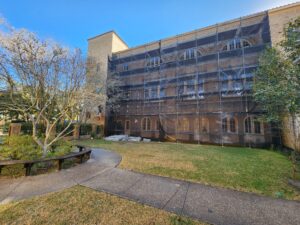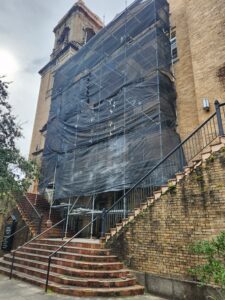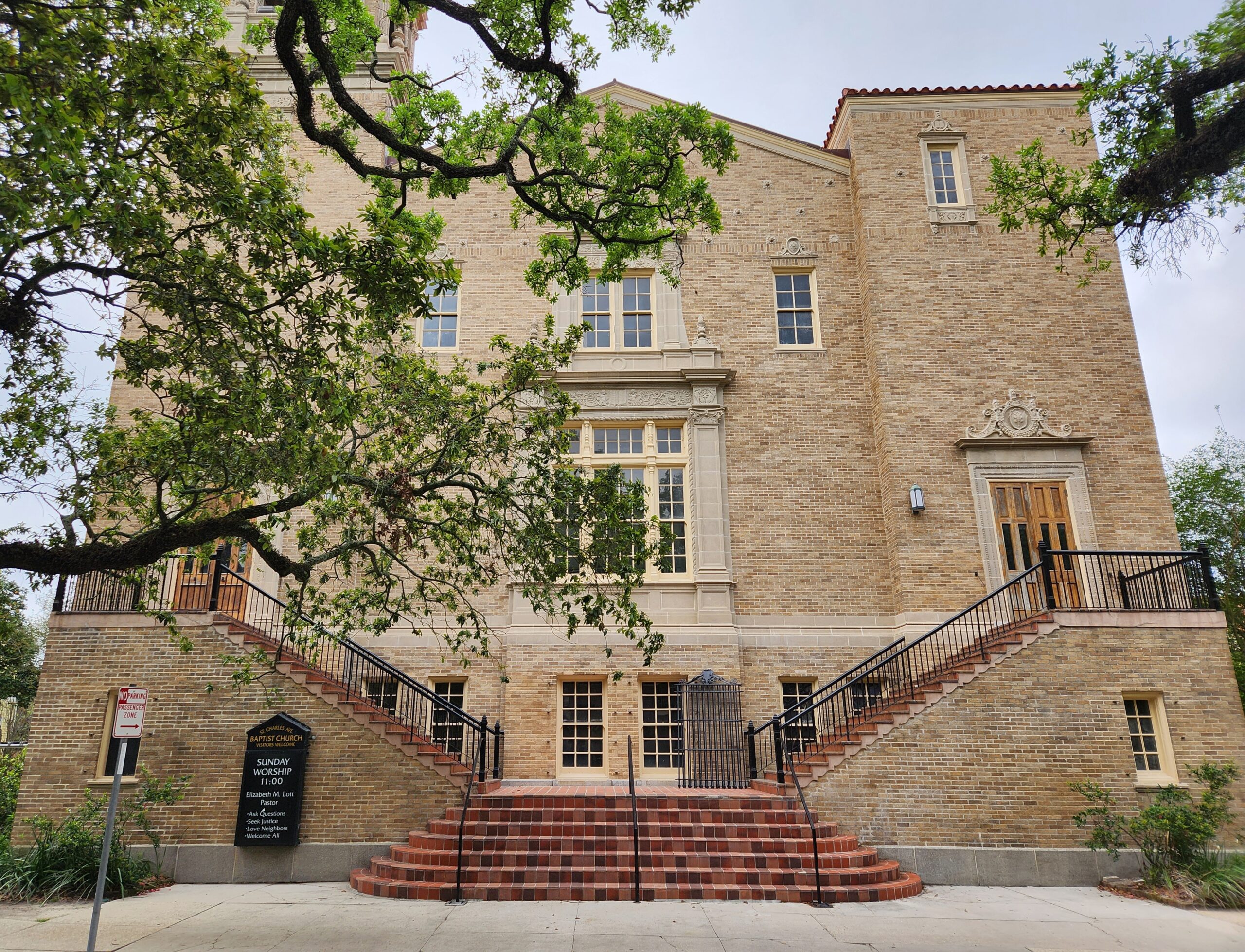By Ann Kendall
In June 2024, Pastor Marc Burwell spoke with Partners for Sacred Places about the impact of receiving a 2019 matching grant from the National Fund for Sacred Places, a joint program of Partners and the National Trust for Historic Preservation.
Tell us about your church building, what challenges did your congregation face?
St. Charles Avenue Baptist Church was constructed in New Orleans in 1925 – and with a building that’s seen nearly a century of use – and hurricanes, the building envelope was fatigued. St. Charles covers a city block, including the sanctuary and two additional buildings that are connected for a total of 44,000 square feet. Our main concern for our buildings involved securing the historic spaces so that the spaces are secured for the community – the years of water damage from floods and leaks had damaged our internal plaster, exterior brickwork, roof and basement spaces.

St. Charles Avenue Baptist Church during restoration (exterior).
What impact did receiving the matching grant have on your capital campaign?
Beginning back in 2017 – based on several building assessments – we knew we had serious infrastructure work to do. We knew our issues were similar to the challenges many historic buildings faced, from our envelope to HVAC and ADA issues. Receiving the matching grant from the National Fund was a huge boost in 2019 to our ability to raise funds – and more importantly to focus on the core mission and community impact. The support provided by Partners from assessment to technical assistance guided the way to create our capital campaign, and helped us to create ways to speak about the importance of protecting and restoring our infrastructure as it relates to our congregation’s mission. Our congregation and community continue to be incredibly generous in their financial support of the campaign and are driven by a sense of urgency to care for our historic spaces as well. The impact of our capital campaign is exponential in that we currently rent space to 25 local nonprofit organizations – in caring for our facilities through this campaign, we are helping these organizations serve clients and provide programs all across the city – through this campaign we are an integral part of their work. The matching grant helped us immensely, not only in conquering our nervousness in tackling a large capital campaign, but also made this whole process possible.

Front of St. Charles during restoration (exterior).
How has the congregation responded to the capital campaign?
Our congregation continues to be excited and enthused about our ongoing progress. We raised the needed funds for Phase I of the campaign from within our congregation and from community grants. At this point, we’re about 98% complete with this phase and are currently working on the historic tax credit portion of the project, which is essential for us. We know more work is ahead as we head into the next phase – including identifying our next priorities which we hope to complete by the end of this year. Through the process of working with Partners and the National Fund, we now have expertise we didn’t have before and we’ll be putting those skills to use. We are a small congregation – about 60 regular attendees and we rely on lay leaders to accomplish much of our work – and we know we can do it. Phase I was really a rallying experience for our congregation.
How does this infrastructure work support the mission of St. Charles?
The important building envelope work we completed in Phase I is the foundation for the next phases which will include HVAC, energy efficiency, plumbing and a host of other infrastructure issues. We are a socially-conscious, progressive congregation in the heart of one of New Orleans’ historic thoroughfares. We are easily accessible in a section of the city where people are comfortable. Taking care of our buildings emphasizes this ease of accessibility – we want our doors to be open for all. While waterproofing, replacing brick mortar, and power washing our facade aren’t glamorous projects, these really do show that we care about taking care of the unseen matters that are literally foundational to our ability to worship and serve.

